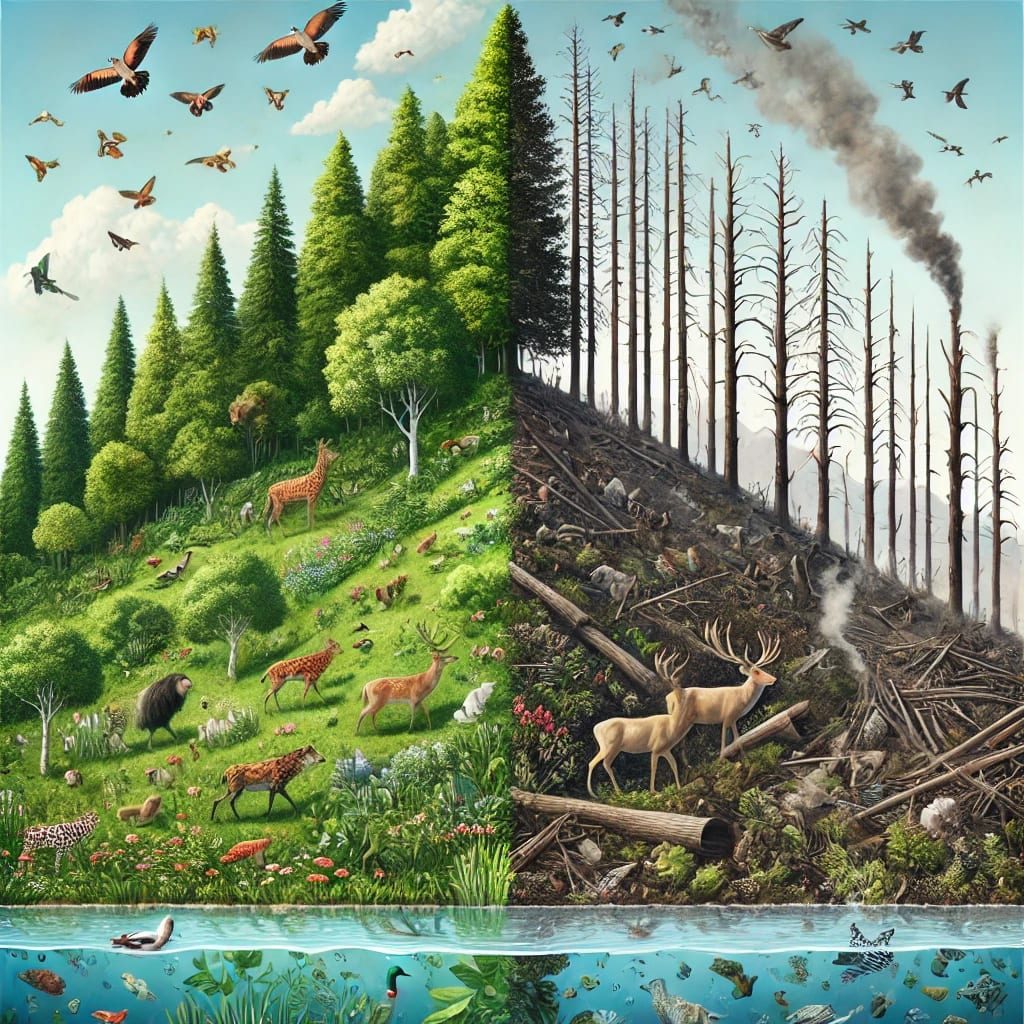A recent report by the World Wide Fund for Nature (WWF) reveals a staggering 73% decline in global wildlife populations between 1970 and 2020.
This alarming decrease underscores the pressing need for comprehensive conservation efforts worldwide.
Freshwater Species Faces Threats
The WWF’s Living Planet Report 2024 highlights that freshwater species have suffered the most, with an 85% decline over the past five decades.
Factors such as habitat degradation, overexploitation, pollution, and climate change have significantly impacted these ecosystems, leading to drastic reductions in biodiversity.
Regional Disparities in Wildlife Decline
Latin America and the Caribbean have experienced the most severe declines, with wildlife populations plummeting by 95%.
Africa follows with a 76% decrease, and the Asia-Pacific region reports a 60% decline. These statistics highlight the global nature of the crisis, affecting both developed and developing nations.
India’s Vulture Populations in Peril
In India, the situation is particularly concerning for vulture species. A nationwide survey conducted in 2022 revealed that the white-rumped vulture population has dropped by 67%, the Indian vulture by 48%, and the slender-billed vulture by a staggering 89% compared to their numbers in 2002.
This decline poses significant ecological risks, as vultures play a crucial role in carcass disposal and disease prevention.
Conservation Success Stories Offer Hope
Despite these challenges, there are positive developments. India’s proactive conservation initiatives have led to the stabilization and recovery of certain species.
Notably, the country’s wild tiger population has seen a significant increase, with the All-India Tiger Estimation 2022 recording a minimum of 3,682 tigers, up from 2,967 in 2018. This success demonstrates the potential impact of dedicated conservation efforts.
Primary Drivers of Decline:
- Habitat Degradation and Loss: Largely due to urban expansion, agriculture, and deforestation.
- Overexploitation of Resources: Includes overfishing and hunting.
- Climate Change: Leading to altered habitats and species behaviors.
- Pollution: Affecting air, water, and soil quality, thereby impacting wildlife health.
- Invasive Species: Outcompeting native species for resources.
Recommendations
WWF emphasizes the urgent need for transformative action to halt and reverse biodiversity loss by 2030. This includes:
- Sustainable Agriculture: Adopting practices that minimize environmental impact.
- Green Finance: Investing in projects that support ecological balance.
- Renewable Energy Transition: Reducing reliance on fossil fuels to mitigate climate change.
- Conservation Efforts: Protecting and restoring critical habitats and species.
Global Call to Action
The WWF report emphasizes the urgent need for collective action to address the dual crises of biodiversity loss and climate change. It warns that continued environmental degradation could push ecosystems beyond critical tipping points, leading to irreversible changes that threaten both nature and human societies.
The upcoming United Nations World Biodiversity Conference (COP16) in Cali, Colombia, presents an opportunity for global leaders to commit to strategies aimed at halting biodiversity loss by 2030.
The dramatic decline in wildlife populations over the past half-century serves as a stark warning. Immediate and coordinated global action is essential to preserve biodiversity and ensure the health of our planet for future generations.
